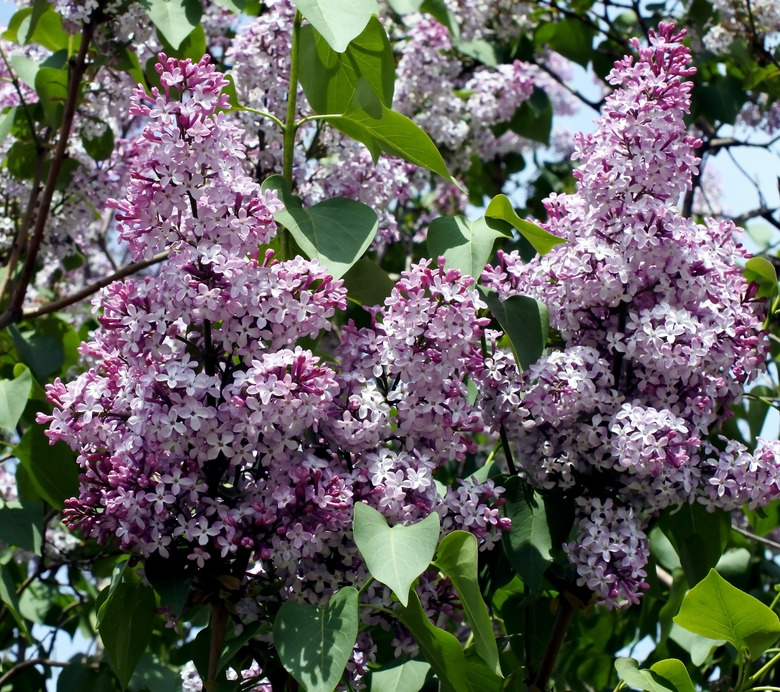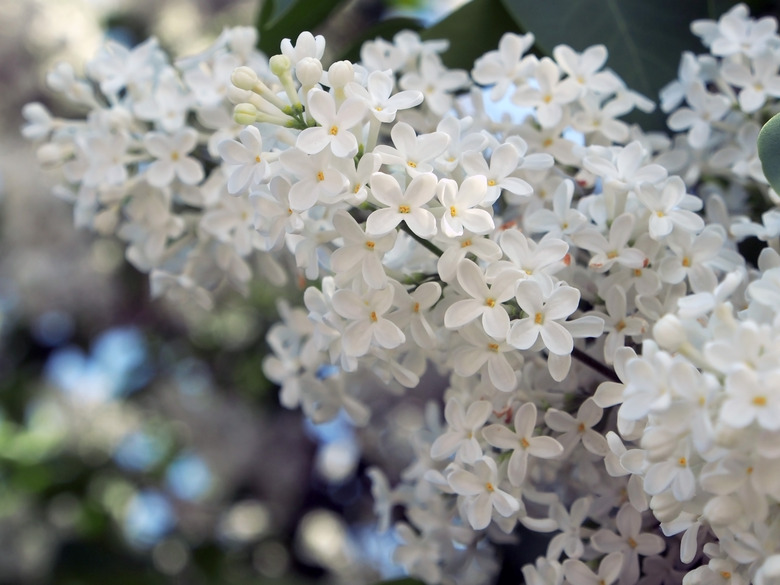How And When To Prune Lilacs
While a young, healthy lilac bush thrives with virtually no maintenance, pruning it each year after it blooms helps ensure a gorgeous array of new blooms the following spring. Maximize blooms by removing the old flowers, along with some new shoots, within the few weeks after the flowers fade. On all varieties of lilac, the blooms sprout from old wood growth, not the spring's fresh shoots. Keep this in mind whenever cutting back overgrowth to ensure ample blooms next year.
Why Timing Matters
Why Timing Matters
Many bushes that flower in spring, including the lilac, are best trimmed in the weeks immediately after the blooms die off. For lilacs that bloomed in May, for example, early June is an ideal time to trim. The new wood created after spring is where some of next year's flower buds form. If all the trimming happens in spring, the bush still has plenty of time to grow and produce the wood that will fuel next year's flowers. If the trimming is done in late summer or fall, on the other hand, much of that new bloom potential can be removed by mistake.
Removing Spent Blooms
Removing Spent Blooms
Cut off old bloom groupings with bypass pruning shears, trimming at the stem just above where two other shoots angle off the same stem. Those other shoots will continue to grow, creating buds for next year's blooms. While it's not crucial to remove old blooms every year, it helps the plant focus its energy on new growth. A lilac bush will grow whether you deadhead the old blooms or not; it'll just be more healthy and lush if you do take the time to maintain the plant.
Trimming Tall Growth
Trimming Tall Growth
If some of the thin lilac shoots are getting too tall, it's perfectly fine to trim back more than just their spent blooms. Follow the stem farther down and cut it off just above another junction point with other shoots. This will keep the side shoots growing and will also maintain an attractive shape to the bush.
This is also a good time to thin the lilac_,_ which helps keep it healthy and productive over the years. Look for spindly, twig-like growth that hasn't produced many blooms, such as branches cluttering the growth near the center of the bush. Trim these off at soil level.
Feel free to remove sucker shoots that sprout up from the roots a couple feet from the main bush. Left unattended, these suckers will become overgrown and make the shrub look unkempt. Cut these sucker shoots down to ground level.
Trimming Problematic Branches
Trimming Problematic Branches
Maintaining Common Lilac Shrubs
Maintaining Common Lilac Shrubs
Common shrub lilacs (Syringa vulgaris cvs) offer the showiest blooms on growth that's relatively young. Branches that are more than six years old produce less, and those blooms that do show up tend to be up high and out of easy reach. More extreme maintenance may be needed every couple years.
This kind of intensive maintenance can even be done in late winter or early spring, before signs of new growth. Look for dead, diseased or malformed branches along with any old growth that hasn't been productive. Cut away any unwanted growth using the pruning shears, switching to bypass loppers for branches that are thick. Cut the unwanted growth down to the ground, if necessary.
- Note: While lilacs are incredibly durable, it's best not to cut away more than 1/3 of the total growth at any one time. It may take the plant a couple years to offer an abundance of blooms again if too much of the old growth is removed.
Dwarf Lilac Maintenance
Dwarf Lilac Maintenance
Dwarf lilacs such as the Palibin Meyer or the Miss Kim Manchurian varieties require minimal maintenance, if at all; the standard deadheading will keep them producing lots of blooms. Dwarf varieties are less likely to become overgrown, but they can be trimmed back, as with standard lilacs, every few years or as needed to help maintain their shape. The dwarf Bloomerang lilac offers even more enjoyment, blooming again in the same year if the spring blooms are deadheaded after they fade. The second bloom happens in late summer to early fall.
Maintaining Japanese Tree Lilacs
Maintaining Japanese Tree Lilacs
Japanese tree lilacs (Syringa reticulata) grow significantly larger than the more common backyard lilac varieties. These may reach 30 feet tall with a canopy up to 25 feet wide. The white blooms also don't smell as fragrant as varieties such as the common lilac (Syringa vulgaris cvs.). Like other lilacs, these may require trimming back every few years to maintain a tidy shape. If grown near parking lots or on tree lawns, branches that droop and obstruct pedestrians or vehicles may also need to be trimmed.



